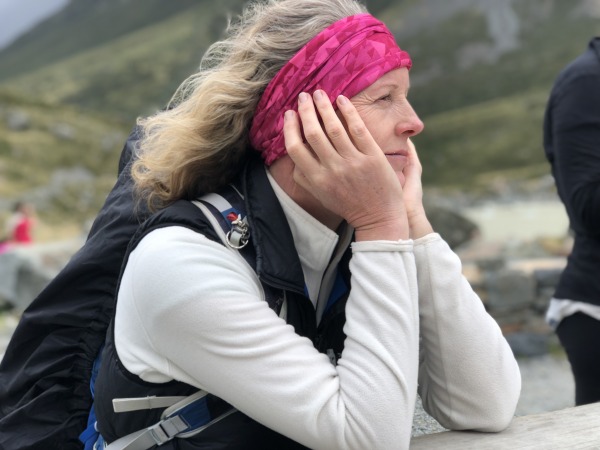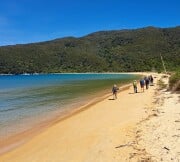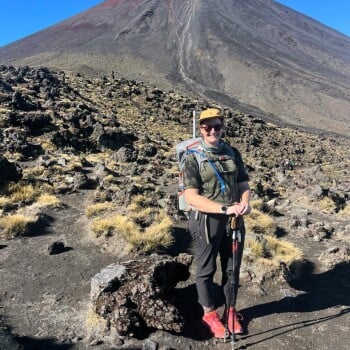
Nature is beautiful, and hiking is one of the best ways you can explore and enjoy it. It may also be beneficial for the body, but not so much on the skin. Enjoyable outdoor adventures like hiking in extremely hot or cold environments can cause problems for your skin through sun exposure, dehydration, and bug bites. However, this doesn’t mean putting aside your plans for those enjoyable hiking trips.
Below are some of the ways you can protect your skin as a globe-trotting hiker:
Always Apply Sunscreen Lotions and Moisturizer
If you’re spending a lot of time outdoors, the need for wearing sunscreen on a daily basis is inevitable to protect your skin. Whether it is during the cold temperatures of winter or the scorching sun of summer, both conditions pose a real danger to our skin health. For instance, during winter, common in mountainous regions, the cold chilling weather can cause skin dryness. However, switching to rich moisturizers and lotion will keep your skin clear, hydrated and healthier. As for high temperatures, a good water-resistant sunscreen lotion will protect your skin from harmful UV rays that can cause sunburns or even cause severe skin damage. Remember to apply the creams even underneath the neck, behind the ears, the back of the legs beside your face and hands.

Protect Yourself Against Bugs
As enjoyable it can be, hiking exposes you to bugs. Granted, this may not be an issue during winter, but during hot seasons in bushy or forested areas, the presence of pests is highly likely. Bug bites can leave your skin with spots and acne. Therefore, spray your skin with insect repellant over your sunscreen. In case of a bite, soothe the bite and alleviate the itch with a topical solution that contains calamine. Besides that, research and be aware of the insect repellents you use. Try to choose natural products to minimize exposing your skin to harmful chemicals, pollutants, and toxins.
Protect Yourself Against Poisonous Plants
If you’ve ever experienced a reaction from poison Ivy before, then you’ll know how horrible it is. Coming in contact with it can cause a severe rash. Poison Ivy is just one of the poisonous plants that are found in outdoor bushy areas. The are other plants out there that can also give you similar rashes like Poison Sumac or Poison Oak. Therefore, for globe-trotting hikers, the first thing is to know how these plants look like. Some like Poison Ivy can be difficult to recognize since they do blend well with other plants and leaves. To protect your skin from these plants, wear rash guards and other protective clothing on your hands and legs like long-sleeved outdoor shirts and khaki trousers. If you’re unsure of the plant, don’t take risks - walk away. Avoid walking in shrubby areas. In case you’ve come into contact with a poisonous plant and notice a rash, don’t touch it. Quickly change your clothes, take a bath and apply thick anti-itching creams or calamine lotion to minimize the discomfort.
Coping With Irritating Sweat
For the year-round hiker, sweating is expected both in hot and cold conditions. When you sweat in the outdoors, your clothes distribute a layer of salty, irritating sweat across your body. This can cause blisters, itchiness, and breakouts. To protect your skin from the corrosive effects of perspiration, use moisture-wicking clothing to absorb the sweat. Always choose clothes with fabrics that are fast drying and absorbent. To protect your facial skin, use an absorbent headband such as a hiking bandanna that will mop up the sweat before it drips down your face.

Always Stay Hydrated
Due to exposure to sunshine and rigorous activity associated with hiking, your body will dehydrate. For your body skin to remain soft and smooth, water is essential. Therefore, always stay hydrated by drinking lots of water.
Avoid Ultraviolet Radiation Exposure
Select sun-protective clothing and wear well vented full-coverage hats when walking in the sun. Considering that globe-trotting hikers spend lots of time outdoors, it’s a good idea to carry and regularly apply sunscreen on your exposed skin to avoid the pain and damaging effects of sunburn. As a globe-trotting hiker, hiking can be an excellent way to discover and explore a particular region or country. However, maintaining your skin healthy when out in the elements can be a challenge. Applying the tips above during your hiking adventures can help you keep your skin looking good and healthy.









